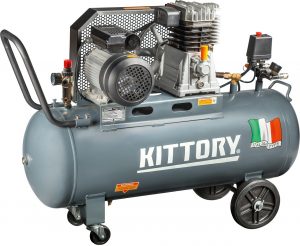
Air receiver works with the principles of air compression. It is a delicate machine that you should be sure of certain features before purchasing it for manufacturing. It is good you prepare a special checklist and take it with you to the wholesaler when trying to purchase an air compressor. You may need to open another two columns in addition to your tested area column whereby you can write down your examinations and tick whether you are satisfied or not.
Checklists to consider before purchasing an air receiver
- Check for cracking: check all the connections to the receiver and pipework for any cracks and mark it on your checklist.
- Check the pressure gauge: the operating pressure is supposed to be in the middle third of the range. The maximum scale must be greater or equal to design pressure or the relief valve setting depending on which have a higher value.
- Check for evidence of unnecessary vibrations: you must feel the pressure receiver in other to be sure of this. Also, feel any pipework connect to the receiver for any unnecessary vibrations.
- Check for the fitted signs: an air receiver should be fitted with the sign “COMPRESSED AIR” or with a similar sign or a similar word. It may also be painted light blue to indicate compressed air.
- Check the drain valve: you can carefully open it to be sure that has been worked on. Be sure that the vessel has been drained. The drain valve can either be manual or automatic.
- Check the shell for damage and corrosion: you may have to stand some distance from the air compressor and examine it carefully for any kind of damage and corrosion.
- Check the ends of the air receiver: stand some distance from the receiver and check it for corrosion and damage.
- Check the welded joints: check all welds to be sure that they are properly done. You should carefully observe all joints that connect to the receiver.
- Check all valve and fittings: check all valves and fittings to be sure they are in good conditions before making your purchase

- Check data plate: be sure that the information there agrees with the paperwork of the receiver. Some of the data plates may be corroded check for corrosion in the data plate.
- Check for external corrosions: it is mandatory for you to check for all external corrosions.
- Check that the air receiver is well-aligned on support: each of the alignments has their particular way that the drain should be sloped.
- Check the nozzles if they are in shape: be sure that the nozzles meet up to specifications/.
- Check the supports of the air receiver: the supports to the vessel should be checked for cracks, corrosion, missing bolts and dirt.
- Check all safety barriers and enclosures: safety barriers, cage and enclosures should be well shielded for the safety of personnel.
- Check the protective coatings: the protective coatings should be in good conditions.
- Check for previous recommendations: some pressure gauges come with previous recommendations. This may be in the form of advice or you may be informed of the actions already taken on the pressure gauge.
After filling the checklists, your next actions should be to record your finding in the subsequent rows. With each finding, there should be a corresponding column whereby you should record your recommendations. You may find out that a pressure gauge is not installed vertically. Your recommendation should be to install it vertically.
When you are sure that the pressure gauge meets the minimal requirement, you can then make your purchase.












